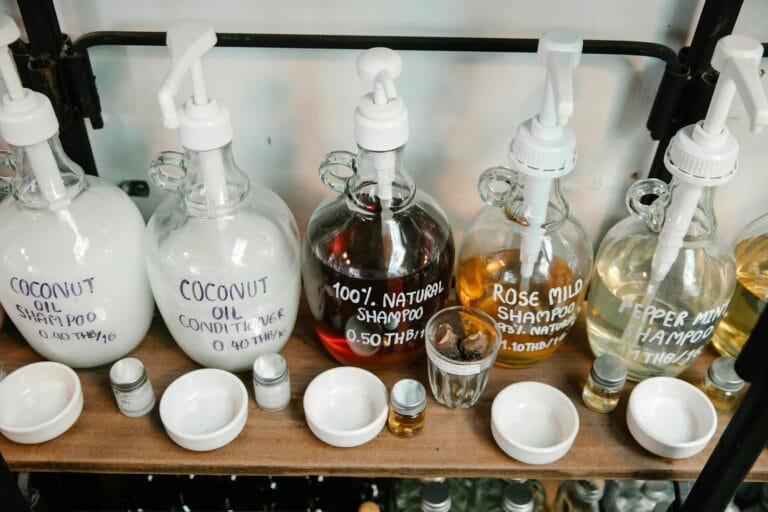
The Effectiveness of Mouthwash in Addressing Oral Disorders: Testing Strategies and Implications

- The Role of Mouthwash in Maintaining Oral Health
- Chlorhexidine as an Effective Active Ingredient in Mouthwash
- The Importance of Laboratory and Clinical Testing in Mouthwash Development
- Effectiveness Evaluation and Challenges in Mouthwash Testing
The Role of Mouthwash in Maintaining Oral Health
Brushing teeth is indeed effective in removing plaque from the tooth surface; however, this method cannot reach all areas of the mouth, such as between the teeth, the back of the tongue, and the walls of the oral cavity. Therefore, mouthwashes are formulated to help clean these areas more thoroughly. In addition to preventing and reducing dental plaque buildup, mouthwashes are also developed to lower the risk of caries (tooth decay), treat or control gingivitis (gum inflammation) and periodontal disease, and reduce bad breath (halitosis).
Furthermore, mouthwashes are also effective as adjunctive care following oral surgeries and dental treatments. Their effectiveness may vary depending on the type of active ingredients, their concentration, as well as the method and frequency of use.
Chlorhexidine as an Effective Active Ingredient in Mouthwash
One commonly used active ingredient in mouthwash formulations is chlorhexidine, which is known to help prevent caries by effectively reducing the number of Streptococcus mutans bacteria, a key contributor to tooth decay. In addition, a 2019 Cochrane review concluded that mouthwashes containing chlorhexidine may help reduce bacteria responsible for halitosis. However, further research is still needed due to the limited quantity and quality of existing studies. Another Cochrane review in 2017 showed that chlorhexidine mouthwash significantly reduces dental plaque during short-term use (4–6 weeks) up to 6 months and is effective in reducing mild gingivitis when compared to no mouthwash, placebo, or other controls.
The Importance of Laboratory and Clinical Testing in Mouthwash Development
In the early stages of development and formulation refinement, it is important to conduct laboratory tests (which do not directly involve humans) to ensure the product meets consumer expectations. However, to assess whether a mouthwash is truly effective in real-world use, efficacy testing must be conducted directly on humans through clinical trials. To obtain meaningful and valid test results, researchers must first clearly define the intended outcome of the efficacy test, and then select the appropriate testing methods to achieve that goal. For instance, to evaluate the effectiveness of a mouthwash in reducing oral bacterial load, two common testing methods include bacterial counts from saliva or from the inner surface of the cheek.
Effectiveness Evaluation and Challenges in Mouthwash Testing
As one of the most accessible oral healthcare products, mouthwash has great potential in helping manage various oral conditions such as bad breath, plaque accumulation, and bacterial overgrowth. However, its effectiveness cannot be assessed arbitrarily. A scientific approach involving various testing strategies, both in the laboratory and through human clinical trials, is essential to ensure the product performs as claimed. A thorough understanding of evaluation methods and the underlying assumptions is key to producing objective and reliable assessments.
With the right testing approach, both consumers and healthcare professionals can make more informed decisions in choosing mouthwash products, while also encouraging manufacturers to continuously improve product quality and safety. Have your mouthwash product tested in a trusted laboratory to ensure its quality, safety, and effectiveness. Through laboratory testing, each formulation can be scientifically evaluated to ensure the active ingredients work as claimed.
This testing also helps detect potential irritation, toxicity, and product stability during storage. With accurate and verified test results, you can increase consumer confidence while meeting applicable regulatory standards. Ensure that every mouthwash product sold has undergone thorough testing to ensure its safety. This step is not only a form of manufacturer responsibility but also a commitment to public health.
Author: Safira
Editor: Sabilla Reza
References :
McGrath, C., Clarkson, J., Glenny, A. M., Walsh, L. J., & Hua, F. (2023). Effectiveness of Mouthwashes in Managing Oral Diseases and Conditions: Do They Have a Role? International Dental Journal, 73. https://doi.org/10.1016/j.identj.2023.08.014.
Schonfeld, H. K. (1965). TESTING FOR THE EFFICACY OF a MOUTHWASH*. Journal of Public Health Dentistry, 25(1), 32–36. https://doi.org/10.1111/j.1752-7325.1965.tb00461.x.



